Overview
Learn everything you need to know about the different types of force gauges, how they work and why they’re critical to your business.
What are force gauges?
Force gauges are instruments that measure compression, tension and push-pull of a load. They are often used on production lines to calibrate equipment–for example, on conveyor belts that require a specific spring tension in certain areas of the belt, or in aviation to measure the compressive force of a pedal.
Whether force gauges are used as standalone units or components of a larger system, they have long set the standard for durability and accuracy in measuring tension, compression, and push/pull.
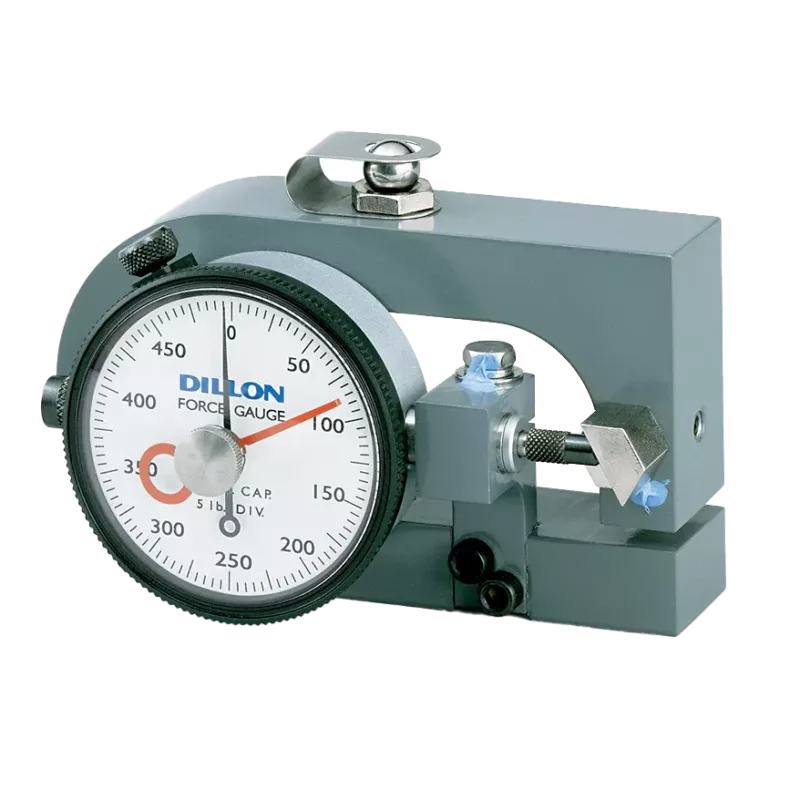
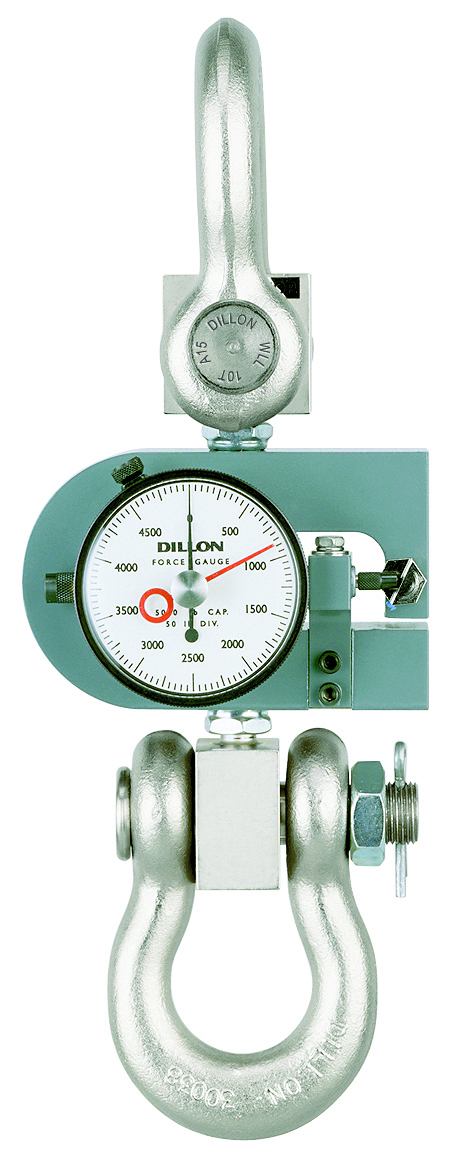
How do force gauges work?
Mechanical force gauges use a load cell or spring to measure the magnitude of the compression or tension, then display the calibrated force value on a graduated dial indicator.
Force gauges can measure two different kinds of force: tension force (the force that is applied when you hold an object on two opposite sides and start stretching it), and compressive force (applied when two sides of a product are pressed together).
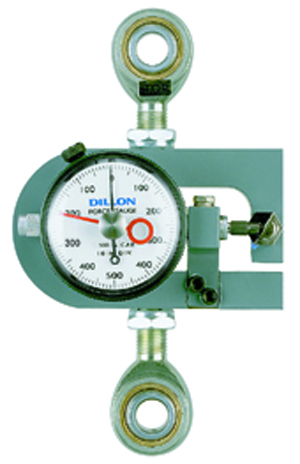
Why is it important to measure compression or tension with a force gauge?
Correct calibration of equipment on a production line is crucial. If machines aren’t pushing or pulling as hard as they should be, or if they are applying too much compressive or tensile force, you can damage both the equipment and the product, leading to costly delays or product shortages.
What are the different types of force gauges?
At Dillon/Quality Plus, we offer 4 types of mechanical (analog) force gauges.
The Dillon Model X-C is used for measuring compression (pushing) only. It operates by using a C-shaped bar that deflects to produce an accurate measurement, and is usually used in production environments to calibrate equipment or the compression load being applied to a specific part or product. The Model X-C comes with a compression ball fitting, which is where you can apply the load, and has a capacity range of 25-25,000lbs with a ±1% accuracy.
The Dillon Model X-ST is virtually identical to the Model X-C, but is used to measure tension (pulling) rather than compression. It functions similarly to a dynamometer, but has a lower capacity and is less rugged, making it ideal for controlled environments like laboratories. It is also more compact than a dynamometer, with a width of 5-6 inches. The Model X-ST comes in nine capacities, from 100-10,000lbs, with a ±1% accuracy.
The Dillon Model X-PP features a split dial and can be used to measure both compression and tension. This model is available in seven capacities, ranging from 50-2,500lbs, with an accuracy of ±2% of the maximum dial reading.
The Dillon Model U is smaller and lower capacity than our other mechanical force gauges. It measures compression and features a slim line design ideal for applications with limited space. It can be used as a handheld device, permanently mounted on a flat surface plate, or used in test fixtures.
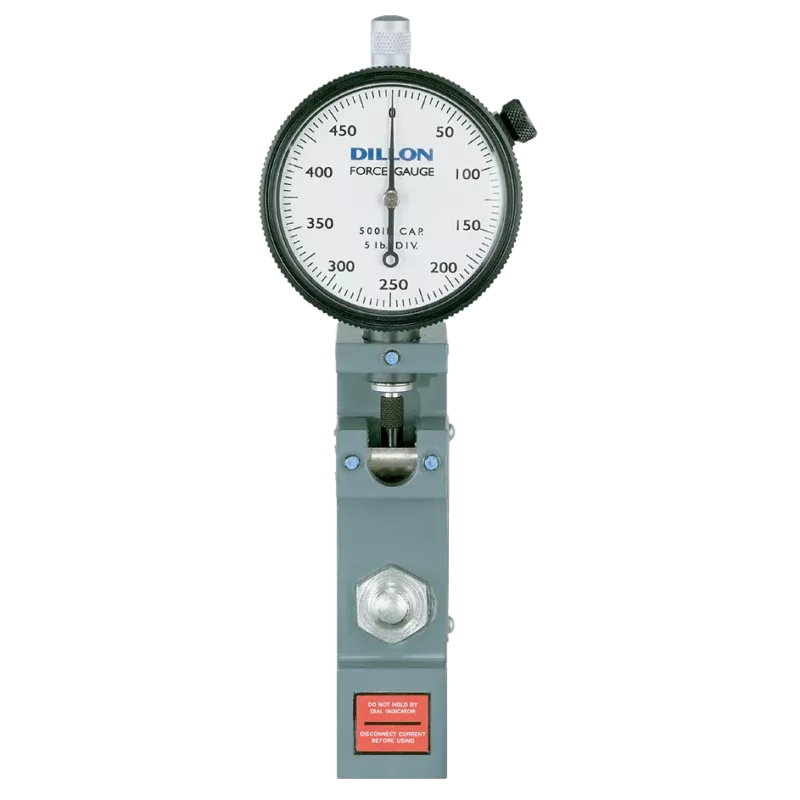
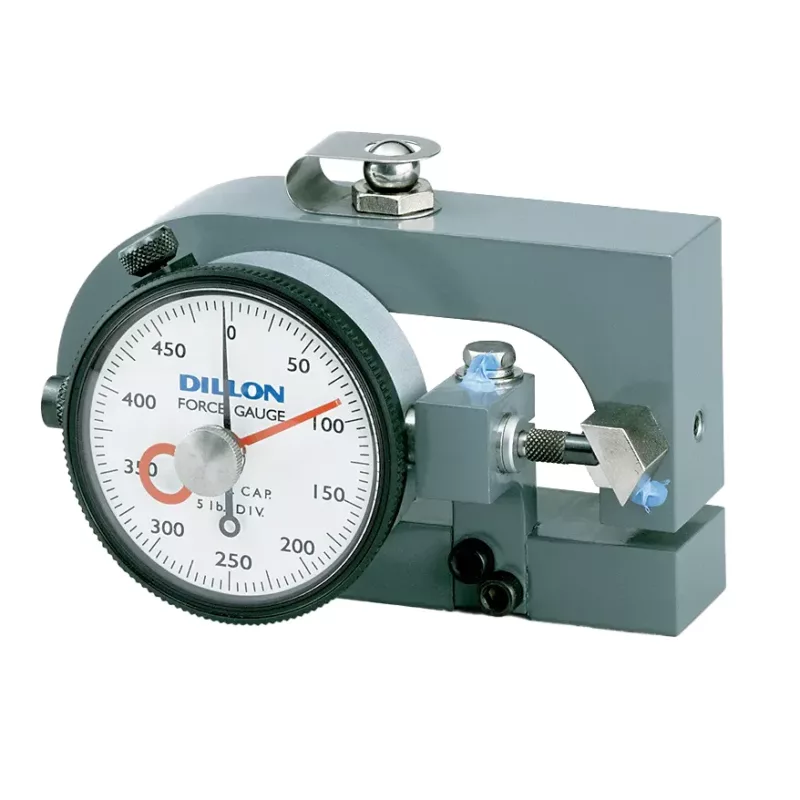
What factors should I consider when selecting a force gauge?
Decide whether you need to measure compression, tension, or both. Also, look at what space/headroom you have available in your project environment. Finally, consider capacity: the accuracy of a force gauge is dependent on the capacity (since it’s accurate within a certain percentage of the total capacity), so don’t purchase an instrument with a much higher capacity than you need for your application.
How much do force gauges cost?
Force gauges can cost anywhere from $500 to $5,000 depending upon the capacity and features required.

Let’s get started
If you’re ready for accurate, reliable compression and tension measurement, learn more about our force gauges or get in touch with our expert team today.
Sales:
Service:

